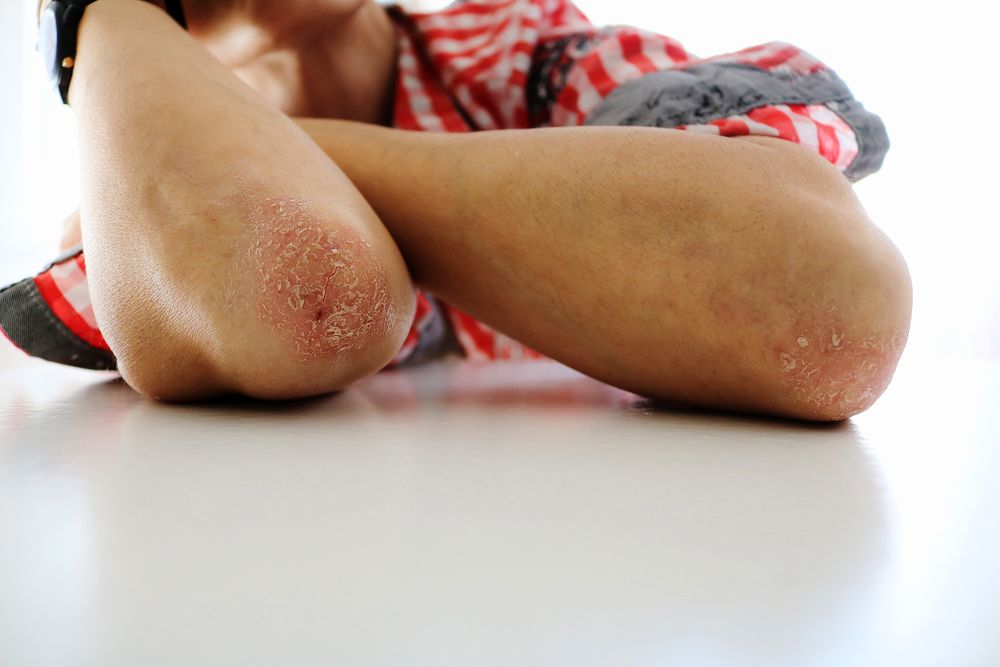- Acne
- Actinic Keratosis
- Aesthetics
- Alopecia
- Atopic Dermatitis
- Buy-and-Bill
- COVID-19
- Case-Based Roundtable
- Chronic Hand Eczema
- Chronic Spontaneous Urticaria
- Drug Watch
- Eczema
- General Dermatology
- Hidradenitis Suppurativa
- Melasma
- NP and PA
- Pediatric Dermatology
- Pigmentary Disorders
- Practice Management
- Precision Medicine and Biologics
- Prurigo Nodularis
- Psoriasis
- Psoriatic Arthritis
- Rare Disease
- Rosacea
- Skin Cancer
- Vitiligo
- Wound Care
Article
Treatment options for psoriasis during adolescence
Author(s):
Developing psoriasis during childhood or adolescence can affect self-esteem. Dr. Amy Paller discussed the impact of psoriasis on adolescents, and treatment options, during the annual NPR Residents Meeting.
Developing psoriasis during childhood or adolescence can affect self-esteem. In this article, we feature treatment options.(©Bexx21/Shutterstock.com)

CHICAGOâNearly one-third of patients who have psoriasis first experience the condition during childhood or adolescence. Knowing how to spot it early can help younger patients not only minimize the impact of the condition, but also reduce the emotional effect.
According to Amy Paller, M.D., a dermatologist at the Feinberg School of Medicine at Northwestern University, developing psoriasis during childhood or adolescence can hurt a young person’s self-esteem and their abilities to build strong social relationships. She discussed this impact and the treatment options available during the 20th annual National Psoriasis Foundation residents meeting.
“Psoriasis can be a devastating disease for adolescents, in particular. In those formative years, they’re psychosocially developing, and we really need to treat it aggressively,” she said. “If we can’t manage it with topical corticosteroids, then we must move on to something systemic to get them the improvement they need or prevent them from developing comorbidities, including anxiety and depression.”
Like adults, children with psoriasis often struggle with obesity and metabolic syndrome, putting them at greater risk for developing cardiovascular disease. In fact, obesity frequently appears years before psoriasis, and 30-35 percent of children have a first-degree relative with psoriasis. This data raises the question of whether preventative measures are possible, Dr. Paller said.
During her presentation, she also explained to residents the various medication options, other than methotrexate, available for patients. Recently, the FDA approved etanercept as the first biologic for children as young as age four. Additionally, ustekinumab is approved for children as young as 12. Both have a faster on-set than methotrexate, and they’re effective in targeting the Th17/IL23 pathway associated with psoriasis development.
In addition, there are also ongoing trials, testing ixekuzimab and ustekinumab in younger children, as well.
Ultimately, she said, residents should be aware of the treatment options available for children and adolescents and when to pursue new therapies.
“We all hear so much about biologics, and we are using a lot of methotrexate in children. On the whole, we’ve found it to be safe,” Dr. Paller said. “But, there’s a slow onset of action with methotrexate. We see a faster on-set with biologics. It’s important for residents to understand what these medications are doing for children and that we’ve got a good track record of safety with them.”
REFERENCE
Paller, A. “Psoriasis in Children & Adolescents,” 20th Resident Meeting National Psoriasis Foundation, Chicago, Illinois, Oct. 21, 9:30-10:15am.
Newsletter
Like what you’re reading? Subscribe to Dermatology Times for weekly updates on therapies, innovations, and real-world practice tips.








